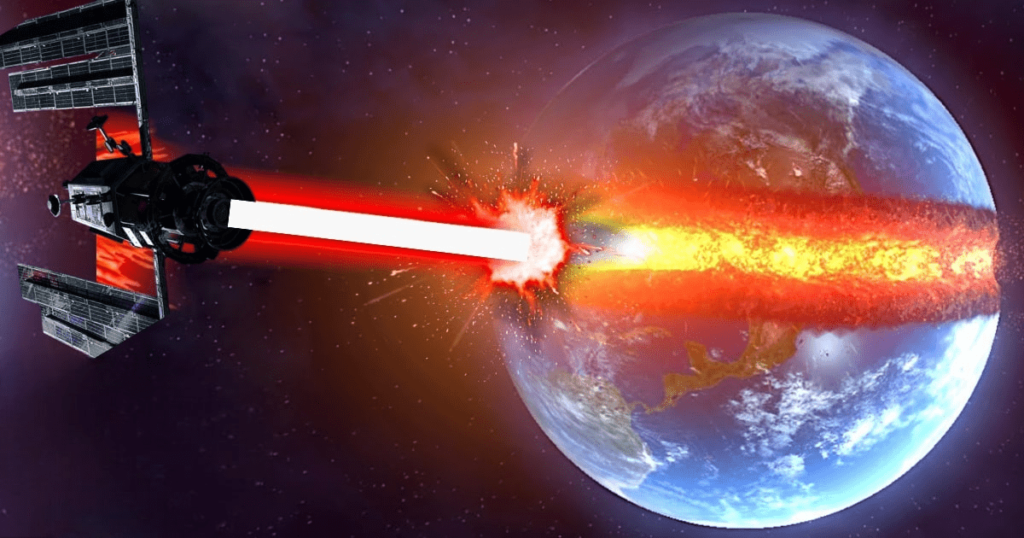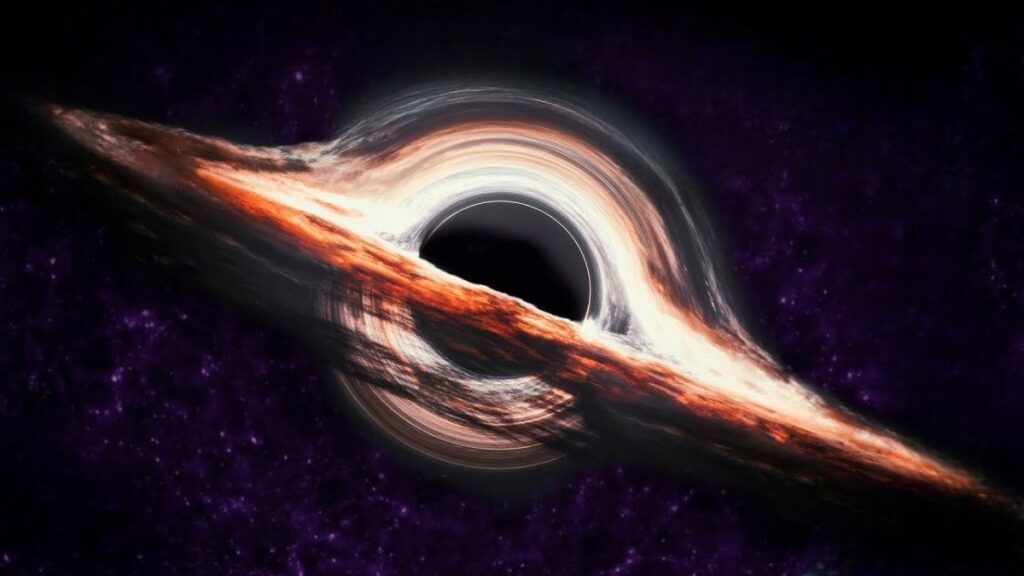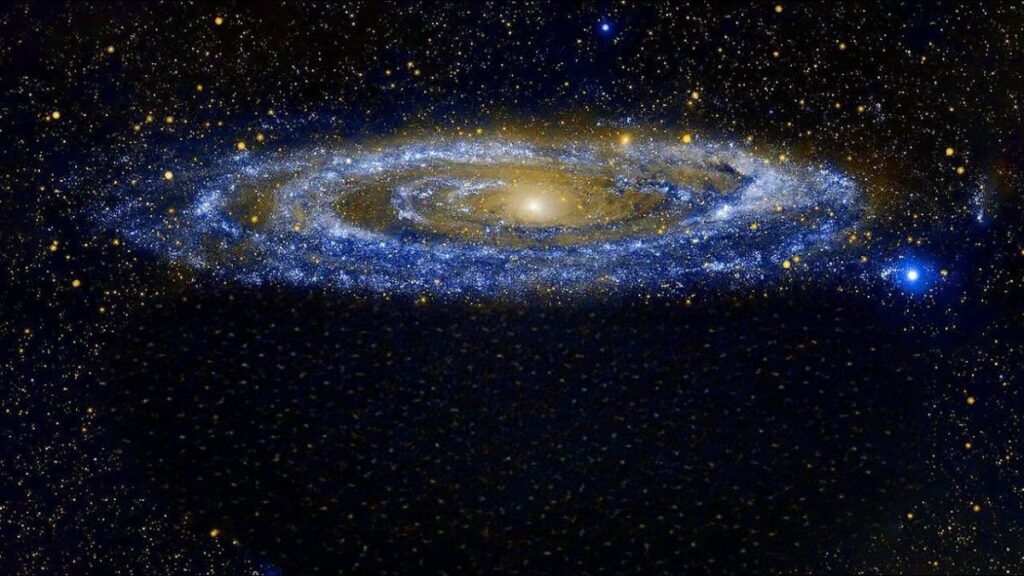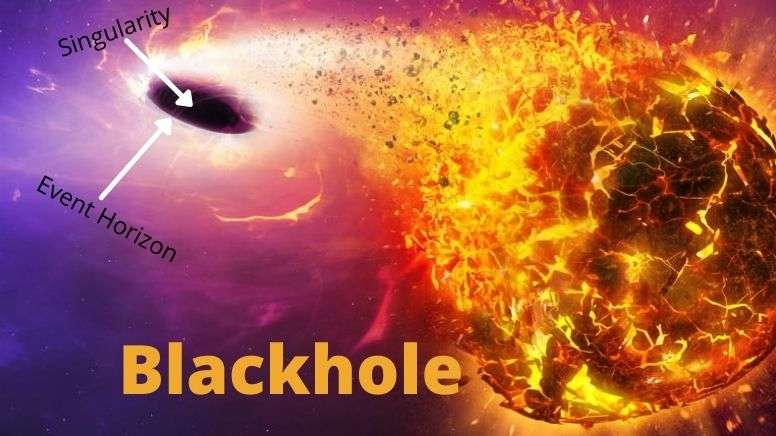
A Black Hole is a region of space whose gravitational force is so much high and intense that it even doesn’t let light to escape from it.
No particles or even radiation like electro-magnetic radiation i.e. light can escape from it.
All the matters and radiation which come under it’s influence of gravity, it sucks them all and by sucking them, it increases it’s size and become more massive and dangerous.
Famous Black holes
Black holes have been so famous because it helps us to discover and reveal the secrets of the universe. We love the vibe when watching black hole scenes in the movies and we get really excited when we see the pictures of the black holes taken by the Space Telescopes. These black holes have been so famous throught the time:
1. Sagittarius A*
Sagittarius A* is a supermassive blackhole made with clouds of dust and gas whose distance is 26000 light years from the Earth. It is the largest black hole present in our Milky Way Galaxy at the center. Its size is roughly 4.6 million times larger than our sun and the idea for its name came from its presence in the Sagittarius constellation.
Bruce Balick and Robert L. Brown discover Sagittarius A* black hole on February 13, 1974. They knew about this black hole existence when they received radio signals from the center of the Milky Way Galaxy.
2. Messier 32 black hole
Messier 32 is an elliptical galaxy whose longest diameter is 6550 light years and the shortest diameter is 5000 light years. Its spinning direction is toward our galaxy’s direction, reaching at the speed of 205 km/s.
Guillaume Le Gentil first discovered the existence of Messier 32 in 1749 when he observed the Andromeda Galaxy with the help of an 18 foot telescope.
This galaxy contains a supermassive black hole in its center like our galaxy does. The mass of this gigantic blackhole is about 1.5 to 5 million times more than that of the sun.
3. Messier 61 black hole
Messier 61 or M61 is an intermediate barred spiral galaxy located at a distance of 55 million years from our Earth.
We can see this galaxy in the Virgo constellation through a moderate sized telescope. Messier 61 also has a supermassive black hole with a mass of 5 million more than our sun.
4. NGC 1023 black hole
NGC 1023 is a barred lenticular galaxy located in the Perseus constellation at a distance of 33 million light-years from the Earth.
The supermassive black hole at the core of this galaxy was discovered by analyzing this galaxy’s dynamics when pointing the Hubble Space Telescope towards it.
5. NGC 1194 black hole
NGC 1194 is a Megamaser galaxy located in the Cetus constellation at a distance of 170 million light-years from the Earth.
The NGC 1194 galaxy also known as UGC 2514 galaxy has a supermassive blackhole in its center with diameter greater than our Earth’s orbit around the Sun (Earth’s revolution orbit).
Who discovered black holes?
John Michell suggested the hypothesis of blackhole existence in 1783. He said, we can find the existence of blackholes by noticing stars revolving around invisible object (i.e. blackhole).
Although John Michell only gave the idea about the blackhole but Roger Penrose actually proved blackholes exist. Penrose further proved the hypothesis of John Michell in reality.
What did Stephen Hawking find about blackholes?
Dr. Stephen Hawking found that blackhole emit radiation also known as Hawking Radiation in 1974.
The basic reason for the radiation emission is that when the black hole emits radiation, they literally destroy material through evaporation from which they have been made.
Real black hole
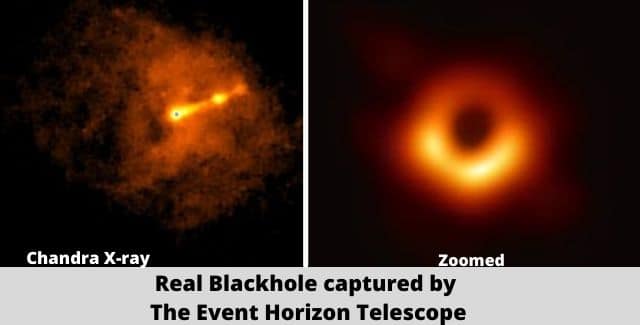
The above image you see is the largest supermassive black hole of Messier 87 (M87) galaxy. This black hole is present in the center of M87 galaxy which is about 6,000 light years away from us.
The Event Horizon Telescope (EHT) Collaboration, who produced the first ever image of a black hole, has revealed a new look in the polarised light of the supermassive black hole at the centre of the M87 galaxy.
This is the first time when astronomers successfully measured polarisation (a signature of magnetic fields) at the very zoomed level. This observation is a key that can help us in explaining how the M87 galaxy launches its energetic jets from its core, said EHT Collaboration.
How do black holes form?
Black holes form when a big or massive star dies. When such stars run of fuel, it’s fuel name called internal thermonuclear fuel which is present in it’s core and come to the end of life.
Then, the core becomes unstable and takes form of Supernova Explosion where it explodes such that stars’ outer layer blows away.
Due to it’s strong gravity, all the mass gets contaminated and compactly packed which causes it to collapse in on itself.
It takes up Zero space where it’s mass is most of when it used to be a star before exploding and gives born to a new Black Hole.
Parts of a Black Hole

There are mainly 2 basic parts of a black hole. They are:-
- Singularity
- Event Horizon
1. Singularity
The center point of Black Hole which has infinite density and gravity is known as singularity. The distance between Singularity and Event Horizon is Known as Schwarzschild Radius.
Note: All the matters are compressed into an infinitely tiny point which makes it’s density infinite because a finite mass is compressed to a Zero Volume where all the rules and conceptions of Space and Time don’t work.
2. Event Horizon
The boundary of a black hole through which nothing (not even light itself) can escape from within it is known as event horizon.
Note: The cause of light for not escaping from black hole(event horizon) is that it’s escape velocity surpasses the speed of light due to too much high and dense gravitational force.
Types of black hole
There are 4 types of black hole determined by its mass and size:
- Stellar blackhole
- Inter-mediate blackhole
- Supermassive blackhole
- Miniature blackhole
If Black Holes Are “Black,” How Do Scientists Know They Are There?
Actually Black Holes doesn’t let light to return back that makes it completely dark and they cannot be seen by our naked eyes.
Scientists know about the presence of black hole in the particular area by the following 2 methods:
- By watching their gravitational effects on nearby stars and cloud of gases.
- By observing the x-rays which are emitted due to excess heating of the gas molecules in outer part (surrounding material) of Event Horizon or Disk Swirl of black holes.
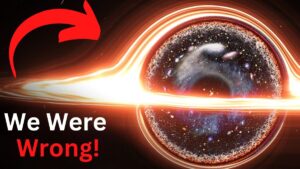


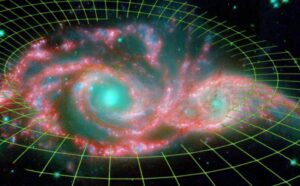

![Moon Jellyfish has [ Hidden Secrets ] You don't know moon jellyfish](https://spaceupper.com/wp-content/uploads/2022/11/1-1-300x169.jpg)

